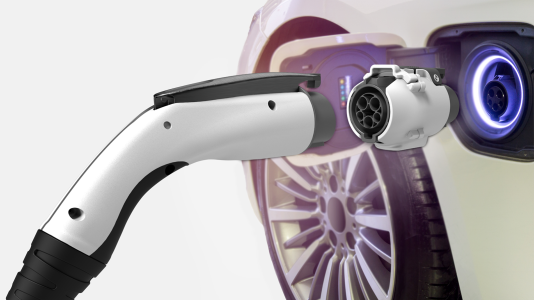
As home devices have gotten smarter — from doorbells to thermostats to cameras — charging stations that support electric vehicles have not kept the same technology pace.
The vast majority of charging stations are still non-networked, meaning they can’t communicate or react to inputs from a smart electric grid. As a result, electric utilities can’t communicate with stations to inform owners or operators of current conditions, nor can they control, monitor or meter charging stations.
If control were possible, grid regulation could be enhanced and more station owners could participate in energy saving and cost saving programs.
To help utilities and station owners reap these benefits, the U.S. Department of Energy’s (DOE) Argonne National Laboratory and the start-up Qmulus have developed a way to transform so-called ‘dumb’ charging stations into smart ones, with two-way communications that enables monitoring, metering and control.
One half of their solution is Argonne’s Smart Charge Adapter (SCA), a device that attaches to existing charge infrastructure, enabling them to communicate wirelessly. The second half is Qmulus’s cloud computing platform (QCP), an interface that electrical utilities and station operators can use to remotely regulate the charging process.
Key features: Interoperability and Aggregation
Argonne’s SCA is designed to go in between the charge outlet and the plug-in electric vehicle (PEV) to which it is connected. The device can be added to any type of AC charging station, whether networked or non-networked, as well as any type of PEV utilizing the standard SAE J1772 plug and inlet.
Users don’t need to upgrade their electrical vehicle supply equipment (EVSE) in order to use the SCA, which makes the technology easy for station owners to adopt. Even the station owners on proprietary networks can take advantage of the tool.
“If those owners don’t like the fees or being forced into a single vendor, they can lock the SCA to the connector of their current infrastructure and switch networks,” said Argonne electrical engineer Jason Harper.
The device supports revenue-grade metering, meaning electric utilities can use it for billing purposes. The SCA is also capable of Wi-Fi transmission, enabling it to relay information about charging conditions to different users via the “cloud.”
The QCP makes use of the SCA’s Wi-Fi capabilities to enable electric utilities and station owners to remotely monitor and control the charging process. Through the SCA, utilities can regulate, in an aggregated fashion, connected vehicles and charging stations. PEV owners would have the option to opt-in or out of programs and receive a financial benefit for participation.
Key benefits: Improving grid regulation and expanding access to smart charging programs
Control over charging processes will enable electric utilities to better regulate supply and demand across the grid. For example, utilities could increase PEV charging power to “sink” excess supply whenever supply exceeds demand and decrease power to maintain grid stability when demand surpasses supply.
Using the SCA and QCP together, utilities can also encourage more customers to join their energy saving programs, which give customers reduced rates for PEV charging, or for charging vehicles during off-peak hours.
Today most residential and privately owned charging stations can’t participate in these programs because they lack the necessary infrastructure, such as an additional smart meter or expensive home energy management systems (HEMS). And for many programs, utilities also have to rely on customers to make changes, such as remembering to charge during optimal service hours and to unplug during periods of high demand.
Using the SCA, utilities would no longer need to install added infrastructure, or have to rely on customers’ vigilance for programs to be effective. Instead, all their customers would need to do is sign up for the various programs then leave it to the utility to schedule and adapt charging based on the owner’s charging preferences/constraints.
“With the SCA, utilities no longer need to install a separate meter but can instead use the adapter to separately monitor charging and calculate billing, and integrate all that data from any charge station into their backend using just one system,” Harper said.
Electric vehicles can help encourage more integration of renewable energy into the smart grid given their flexibility and control of charge events. However, to take advantage of this flexibility and control, utilities and aggregators need the proper tools to aggregate the available electric vehicle load. In the future, the SCA and QCP when deployed at scale could be these tools.
Additional application: Diagnosing charging issues
The SCA can also be used by vehicle manufacturers as a diagnostic tool. To enable this application, Argonne researchers are developing a companion device to the SCA, known as the diagnostic electric vehicle adapter (DEVA).
DEVA can diagnose problems PEV owners may encounter while charging. Today these problems are not easy for technicians to discern, especially if the source of the problem is the charging infrastructure rather than the vehicle itself.
By giving technicians the ability to remotely analyze charging issues in both the vehicle and the charging station, DEVA will make the process of diagnosing and resolving charging issues more efficient.
Development of the SCA is funded by the Technology Commercialization Fund managed by DOE’s Office of Technology Transitions. SCA is being developed and tested in partnership with Qmulus, LLC, and Zen Ecosystems.